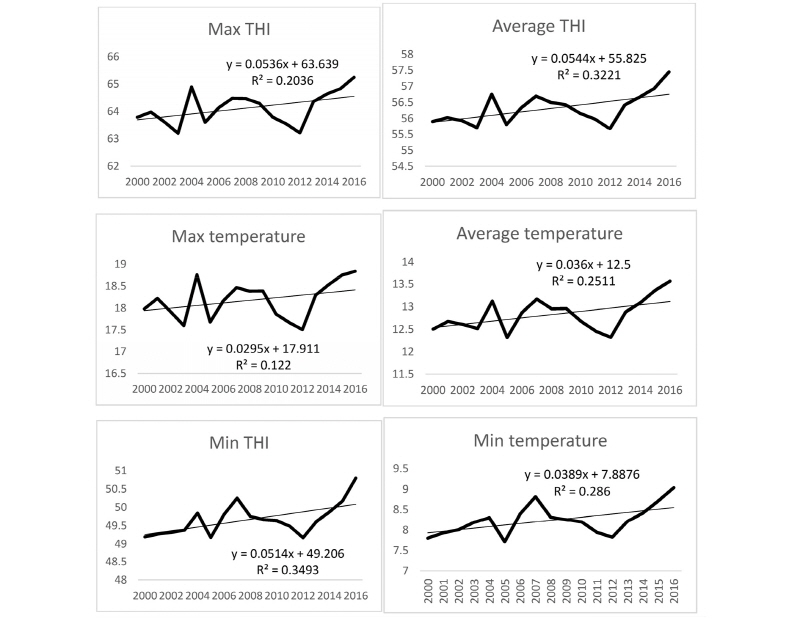Abstract
The study was conducted to investigate the genetic evaluation model for heat tolerance in Korean Holstein. The temperature-humidity index (THI) was used to estimate the degree of heat stress, as an indicator of heat tolerance. The meteorological data, between 2000 and 2016, were collected from 79 regional weather stations with Automated Surface Observing System (ASOS) installed. A total of 116,611 test-day daily milk production records on 11,236 dairy cows, between 2000 and 2016, were collected by Dairy Cattle Genetic Improvement Center. The maximum temperature, minimum temperature, average temperature, THI, and total heat days (days over THI 72 up to peak milk production) tended to increase annually since 2000. The lactation curve of cows differed according to calving seasons, calving ages (month) and THI classes. If total heat days were prolonged or if THI rose over 72 units at least one test day before the peak milk production level was reached, then days to peak milk production were extended as estimated with incomplete gamma distribution models. Therefore, we suggest consideration of calving seasons, calving ages (months) and days-in-milk factors in genetic evaluation models for heat tolerance. Also, further studies on relationships between heat stress conditions and milk production could provide additional insights into the genetic backgrounds of dairy cattle.
Acknowledgements
본 논문은 농촌진흥청 연구사업(세부과제명: 젖소 유전능력평가 및 농가 컨설팅 정보 활용 개선 연구, 세부과제번호: PJ012606042018)의 지원에 의해 이루어진 것임.
Figures & Tables

Figure 1 Annual trend of min-temperature, average-temperature, max-temperature, min Temperature-Humidity index(THI), average-Temperature-Humidity index(THI) and max-Temperature-Humidity index(THI) in south Korea (2000~2016).


